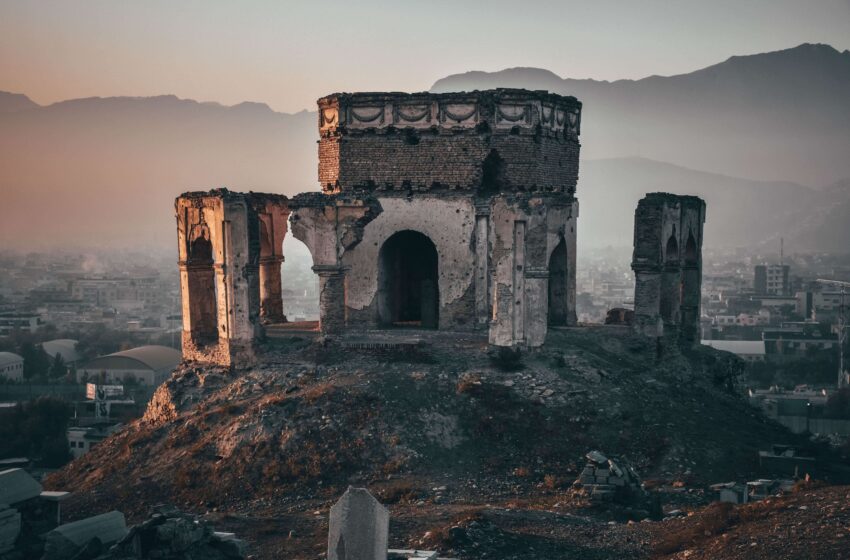
Afghanistan’s Only Travel Guide You Need For A Great Trip in 11 Easy Steps
- Destinations Asia
Cruisit Team
- April 13, 2022
- 1
- 4957
- 96 minutes read
Afghanistan’s Background
Afghanistan is hardly the first place that springs to mind when considering a vacation trip abroad. You’re probably picturing bearded fellows blowing themselves up in the name of religion. But it wasn’t always like that. In the strong 1960s and 1970s, the nation was an essential part of the overland trail to India. Kabul was on par with Kathmandu as a place to hang out and chill for a while on the lengthy journey to the East.
Then it all came crashing down. except for the most obvious and well known, tragic three decades: Coups, Invasions, Civil Wars, Terrorist Camps, More Wars, Western Interference, and yippy yay, you’ve reached the present time. Afghanistan is not peaceful, not anymore, but it hasn’t deteriorated to what it was like (total anarchy) in the 90s either.
Before all this slaughter and bloodshed, Afghanistan was a stop on the overland hippie trail, giving travelers with spectacular mountain ranges, a rich mix of cultures – and the Afghan people themselves, who greeted everybody with an easy charm and friendliness.
Afghanistan, a devastated yet beautiful and proud country, faces new challenges on its journey to hopeful recovery, and its people’s resilience is tested.
As a traveler, the natural question that comes to mind is, “is it safe?” the quick answer is “NO” Is it possible to travel there? Well, yes. But, only if you come properly prepared, understand the dangers, and are willing to take them. If you are determined to visit this country, keep in mind that it is not a “normal” country. Afghanistan is an unfrequented place, and as people say, an off-the-beaten-track destination. When we say be prepared, we mean you should know, check, and double-check the present security situation. Visit Afghanistan forums and security platforms, and, if feasible, speak with people who have recently or are now there. Pay attention to the suggestions offered and be ready to abandon your plans if it turns out they are not possible. Be flexible.
“Afghanistan has a history
worth telling, only if it opens up to the world“
When it comes to history, the Bamiyan valley, once a sacred Buddhist site, is dominated by the empty niches of Buddha statues. The two sculptures, which stood 38m and 55m respectively and were carved in the 6th century, were the largest standing Buddha statues ever produced. Despite the fact that the sculptures are no longer there, the emptiness of the places they left behind inspires both awe and peaceful contemplation. Although it is possible to observe the niches for free from a distance, a ticket from the office of the Director of Information and Culture (in front of the Large Buddha niche) enables further admission to the site.
During the civil war, the niches and caverns were frequently utilized as ammo caches, with some soldiers using the sculptures for informal target practice on occasion. The last, and most heinous, humiliation was their total destruction by the Taliban in March 2001, leaving behind an indelible reminder to Afghanistan’s countless cultural losses in recent conflicts.
The situation in the country is variable to the most extent. Safe areas can turn dangerous. Dangerous places become safer. However, if you leave your home country and embark on this journey, and if the situation changes when you do go, you will surely. be rewarded.
Kabul for instance, has flourished in recent years, with an inexhaustible supply of new buildings, elegant restaurants, bustling bazaars, and an air heavy with the hum of cell phones. But scratch the surface and things aren’t always so beautiful — the infrastructure creaks, power and clean water remain a pipe dream for far too many, and the background thrum of security warnings and roadblocks reminds you that Kabul’s road to restoration remains difficult. It’s an exhilarating, frustrating, thrilling, and horrifying introduction to Afghanistan.
Where do we begin? Be careful that you are in a conflict zone! As previously said, do your homework about the nation and the present circumstances before considering traveling there. We cannot emphasize this more!
Fly until you are absolutely confident that the road is safe. Take internal flights to get to your destination. Roadside bombs, kidnappings, firefights, and landmines are all genuine threats.
There are no safe zones in Afghanistan, only “safer” zones. In general, the north is slightly safer than the south. Again, this is meaningless because insurgents may and do attack at will even in the north, and it may appear that the north is more dangerous than the south at times. The Wakhan Corridor, which can be accessed via Tajikistan, is arguably the safest region of the nation, but even there, gather the most up-to-date information on the security situation before visiting!
Grow a beard, dress traditionally, and try to blend in as much as possible. Not everyone does it, but it will most likely make you feel safer and lower your danger. You are an easy target if you stand out. If someone intent on causing you damage needs to look twice to recognize you as a foreigner, you’ve already cut your odds in half.
The major languages spoken in Afghanistan are Dari and Pathan, and if you can speak a few words of either, everyone will love you.
Finally, be cautious, but not overly so. Afghans are not all terrorists; in fact, they are among the kindest people in the area. Get to know them and talk to them; you won’t be disappointed!
- After meandering around the bazaar and visiting the spectacular Friday Mosque, then watch the sunset over the Musalla Complex from Herat Citadel.
- Visiting the mysterious Minaret of Jam deep in the Hindu Kush mountains; it’s towering, majestic, and in the middle of nowhere!
- Being astonished by Band-e Amir’s mirrored, blue jeweled lakes, rightly titled the Lakes of Awe.
- As you stare at the vacant alcoves in Bamiyan, consider the sources of religious extremism.
- Stroll around Kabul’s bazaars or go to the famed Kabul Museum and marvel at how the curators were able to rescue so many treasures from destruction by hiding them.
- Observe the faithful pay tribute to the Prophet’s son-in-law, Hazrat Ali, at the Hazrat Ali shrine at Mazar-e-Sharif (aka Mazar-i-Sharif)
- Be like Indiana Jones in Balkh, dubbed the “Mother of Cities” by Arabs due to its ancient history.
- Hike through Afghanistan’s sole (relatively) secure region, the Wakhan Corridor (aka Vakhan Corridor)
- Discover the Afghans’ legendary kindness and friendliness!
- It’s a dangerous destination to visit, but it’s also a beautiful place to be.
- Herat, Mazar-i-Sharif, Kabul, Bamiyan, Kandahar, and Wakhan are reasonably secure locations to stay. Dari (Afghan Farsi) and Pashto are the Corridor Languages. English is not widely spoken.
- The predominant religion is… you guessed it. Islam is the religion of 99 percent of the Afghans. However, avoid any religious gatherings. This is not a country that lives up to the peace that Islam teaches.
- Afghans are staunchly conservative. As a result, dress and act properly.
- Afghanis are the local currency, however USD is routinely dispensed from ATMs in large cities.
- Afghanistan is a difficult country to obtain a visa. For a restricted number of embassies to approve your visa, you will most likely require an invitation letter. Among such embassies are those in Dubai, Islamabad, Karachi, and, according to some, Kuala Lumpur.
- Turkish Airlines, Kam Air, and Ariana Afghan Airlines all fly to Afghanistan.
Unless escorted by a native, avoid going about after dark. More importantly, avoid traveling between cities after midnight, since the Taliban will put up unofficial checkpoints on the roadways.
If you need something after dark and don’t feel safe walking outside, hotel and guesthouse employees would gladly fetch it for you (often for a small fee).
In nature related activities like hiking, avoid moving around unknown tracks as Afghanistan has a mine problem.
The best time to visit Afghanistan is generally in April-May and September-October. You’ll avoid the 40°C summers which can make sightseeing unbearable, and the winter snows which cut off more remote regions. December to April is the rainiest period, and in spring, northern Afghanistan in particular is lush and green.
There are no low and high seasons though, this country is tormented by endless political unrest, and there isn’t any existing tourism to speak of, so prices are likely to remain the same year long. The choice of when to go is solely for what weather is best to embark on your perilous and daring journey.
By Air
The only airport that operates in Afghanistan is the Kabul International Airport. The airlines that operate in and out of Afghanistan are Turkish and Emirates airlines who ceased serving Afghanistan into Kabul due to the city being taken over by Taliban in 2021. Until other notice, these airlines do not operate anymore. Ariana Afghan Airlines is the local airline, and they are between on and off depending on the current civil situation.
Aside from Kabul International Airport, Afghanistan has 2 more International Airports which are Hearat Airport and Mazari Sharif Airport.
By Land
For you to be able to enter Afghanistan by land you will need a route pass issued by an Afghan Embassy. The borders that are open for entry are two border crossings including Milak and Mahirood (Milak 53) between Iran and Afghanistan.
Another main border crossing between Afghanistan and Tajikistan – Sherkhan Bandar (port) – is under the control of the Taliban since 22 June 2021. Until further notice, we advise against crossing from there.
Due to security issues, Aqina Customs office at border crossing point between Afghanistan and Turkmenistan, is closed for international transit under the TIR System and national transit
Afghanistan’s Airlines
Afghanistan’s two biggest airlines are Kam Air and Ariana Afghan Airlines. Ariana is often less expensive than Kam Air, although Kam Air has a higher reputation.
You’ll most likely be paying cash for your tickets, so stock up! Domestic tickets can be purchased in person at a travel agency or airline office with your passport. Tickets are also available for purchase online. Book many days ahead of time, especially for Bamiyan (if flights restart), since tickets often sell out quickly. International tickets may be booked through any website you regularly use, but it is worth checking to see what local operators charge.
Because of a history of airport assaults, the country’s airports are heavily fortified. Arrive at least two hours before your flight to give time to go through the various levels of security. Bag scans, body searches, and bomb-sniffing dogs are available at each airport. Body searches for women must take place in a separate location. The women’s check is normally hidden off to the side behind a fluttering curtain.
Ariana Afghan Airways has flights to Mazar-i-Sharif, Herat, Kandahar, and Bamiyan. Kam Air operates those flights as well. It should be noted that not all destinations are published on the airline’s websites. For domestic bookings, it is advisable to visit a ticket office. Depending on the location, one-way tickets range from $50 to $110. Flights to Bamiyan continue to be infrequent
Afghanistan’s Buses
Buses for long distances
The Kabul – Mazar-i-Sharif bus is the only known “safe” long-distance bus route for Westerners. However, the route was judged hazardous for public travel during our initial visit. While you’re there, ask a local if the route is safe for transportation.
Inner-city buses
These buses might become crowded, but for roughly 5 – 10 Afs each ride, they’re an unbeatable bargain. They have designated bus stops, but you may always try to get off in between. Men sit at the front and women in the rear, however couples can sit together in the center.
Bus to Mazar-i-Sharif: A bus from Mazar-i-Sharif to Kabul costs roughly 600 Afs per passenger. Before purchasing a ticket, ask around to verify if the trip is safe, and depart early so the bus arrives before dark. If you choose this option, dress locally and keep a low profile. The less people who are aware that there is a foreigner on the bus, the better. We were informed in November 2018 that this route is relatively safe, but please exercise caution.
We strongly advise against taking the bus to Herat. It travels across Taliban-controlled territory, and even Afghans prefer to fly. According to our host, he knows Westerners who successfully completed the journey, but he feels they only did so because they could pass as Afghans. If you must travel the bus, keep your voice down.
Bus to Bamiyan: Because airplanes are still infrequent, you must go by bus to Bamiyan. Because the area between Kabul and Bamiyan is prone to violence, it’s a good idea to check with locals before venturing there. If you want to ride the bus, ensure that the driver follows the Ghorband route, which is regarded safe. The path through Wardak is not safe.
Cabs in Afghanistan
Normally, any car is willing to stop and operate as a taxi. It’s at your discretion whether or not you want to take the ride—for security concerns, it’s best to stay with yellow cabs if you’re alone.
Yellow-ish cabs may be found in all of Afghanistan’s main cities, as well as a few outside of the city borders. Although there are no meters, an inner-city trip can start at approximately 50 Afs and should never exceed 200 Afs, though you may have to haggle hard at times. Always set a price in advance! Unless otherwise the fare is high.
Cab to Panjshir Valley: It costs around $45 (3000 Afs) for a taxi to and from Panjshir Valley, but we’ve heard it can be done for $40… or less. The valley is around 100 kilometers away, and the travel takes about 2-3 hours, with checkpoint pauses along the way
If you need phone service while in Afghanistan, Roshan or Afghan Wireless (AWCC) are your best options. MTN and Etisalat are two other alternatives. Wifi is available in most hotels, however whether or not it works is dependent on the connection’s mood.
Sim cards are available for purchase at any authorized carrier location. Bring your passport and be prepared for your fingerprints to be taken. Credit top-up/scratch cards can be obtained from street sellers or mobile storefronts. It’s worth noting that street sellers only provide top-up for calling and SMS; for data top-up, you’ll need to visit a mobile store.
Prices for Roshan service
- Sim card and 25 Afs credit cost 50 Afs
- 3GB/month of data costs 350 Afs
- You can find more prices and packages on the Roshan website
Prices for Afghan Wireless
- 1GB/month data costs 150 Afs ($2.30)
- 3GB/month data costs 400 Afs ($6)
- You can find more prices and packages on the Afghan Wireless website
Prices for MTN
- 2.5 GB/month data plan + sim card costs 500 Afs
- 1 GB top-up costs 350 Afs (must be done at an official MTN store)
Top Places in Afghanistan
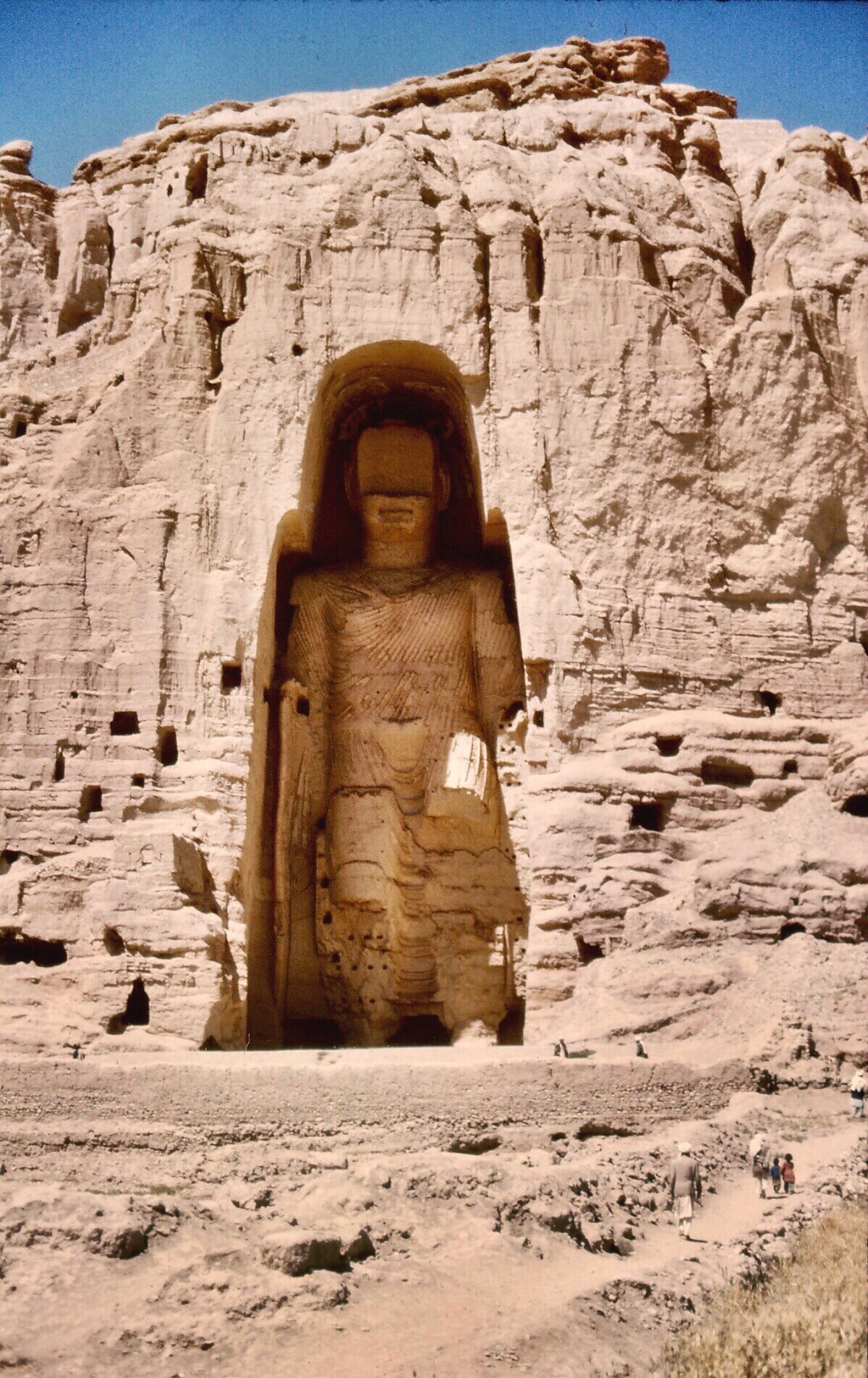
The Buddhas of Bamiyan
The Buddhas of Bamiyan were two massive sculptures from the sixth century, Salsal and Shahmama. They were carved into the side of a cliff in central Afghanistan’s Bamyan valley at a height of 2,500 meters. Carbon dating shows that the smaller 38 m “Eastern Buddha” female Shamama was erected about 570 AD, and the bigger 55 m “Western Buddha” male Salsal around 618 AD both under the reign of Hephthalites in the area. All the sculptures were carved straight from the sandstone cliffs and details molded in mud combined with straw and stucco-coated mud.
Minaret of Jam
In western Afghanistan, the Minaret of Jam is a UNESCO World Heritage Site. The 65-metre-high tower was made completely of baked bricks in 1190 and is known for its elaborate brick, stucco, and glazed tile design. Since 2002, the minaret has been on the list of World Heritage in Danger, indicating that it is under considerable threat of erosion and is not being actively maintained.
The Islamic World Educational, Scientific, and Cultural Organization designated the Minaret of Jam as a cultural heritage site of the Islamic world in 2020.
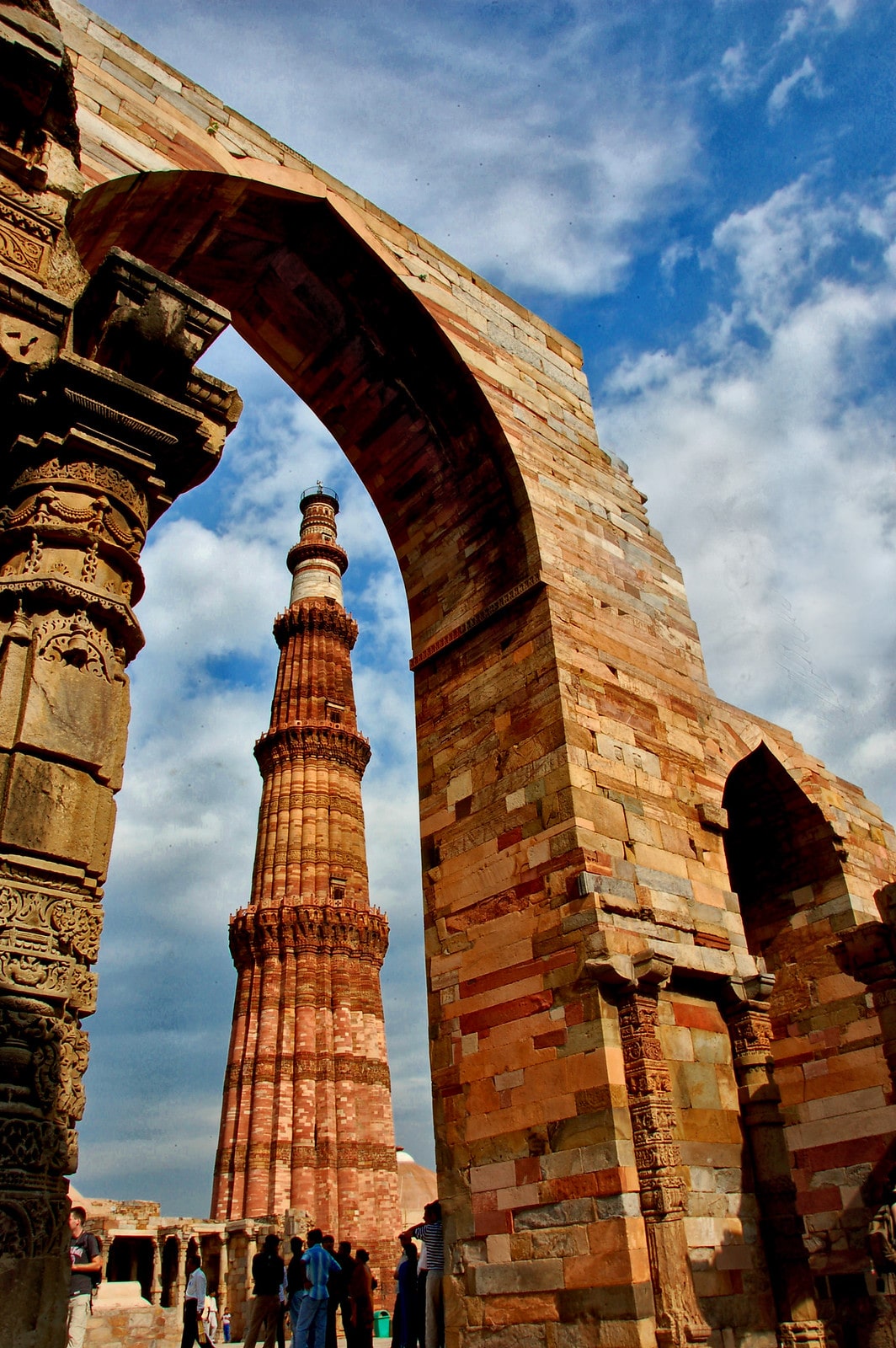
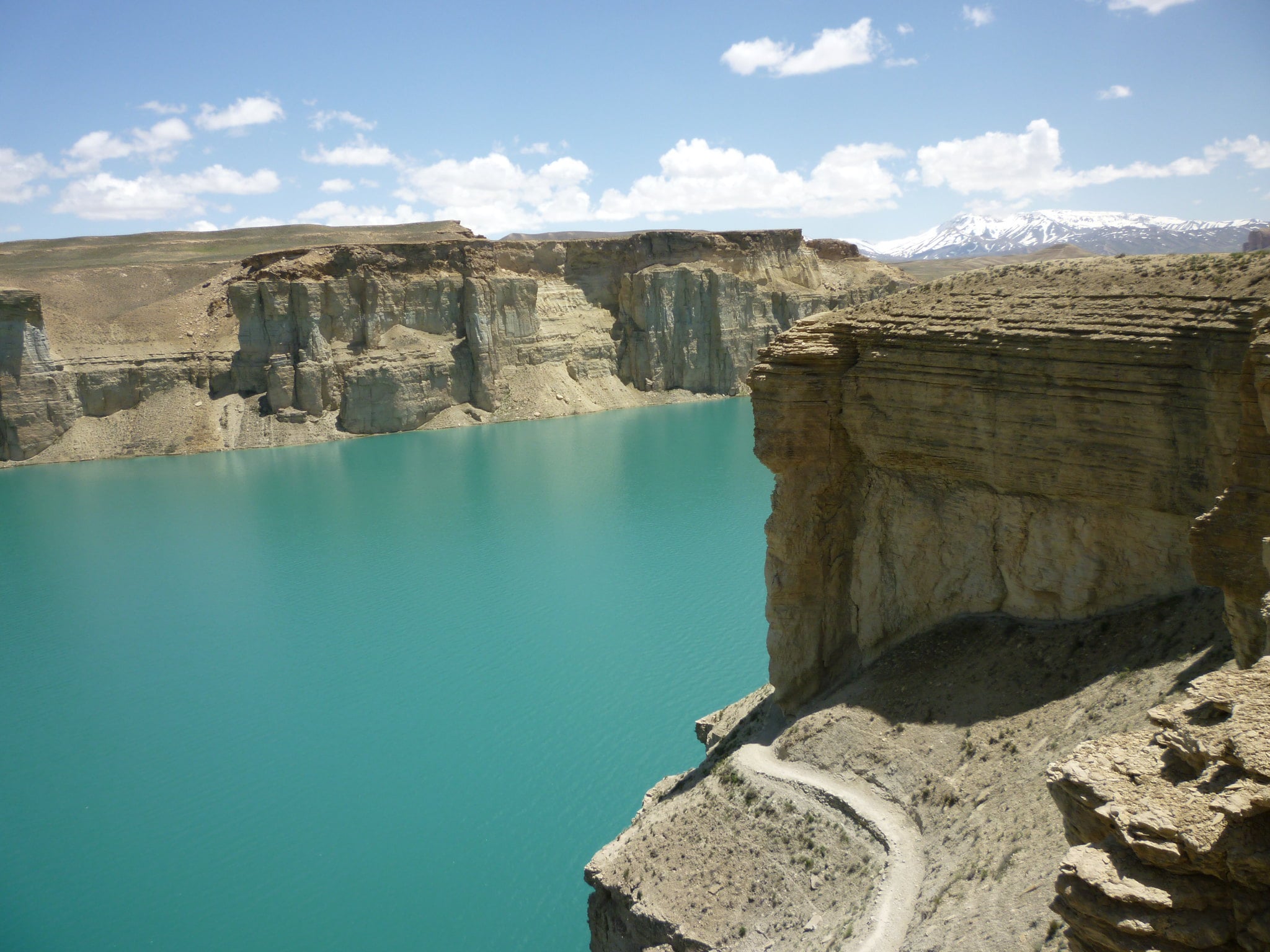
Band-e Amir National Park
Band-e Amir National Park is a national park in central Afghanistan’s Bamyan Province. It is one of the world’s very unusual natural lakes formed by travertine systems. The place has been dubbed “Afghanistan’s Grand Canyon,” and it attracts thousands of visitors each year. Six deep blue lakes are divided by natural dams formed of travertine, a naturally occurring mineral. These lovely lakes are located in the Hindu Kush highlands, roughly 3000 meters above sea level, west of the famed Bamiyan Buddhas.
Kabul Museum
The National Museum of Afghanistan, popularly known as the Kabul Museum, is a two-story structure located 9 kilometers southwest of Kabul’s downtown. With approximately 100,000 pieces going back millennia, the museum’s collection was formerly one of the most important in Central Asia. As of 2014, the museum is undergoing considerable development in accordance with international standards, with a bigger surrounding garden for visitors to relax and stroll around.
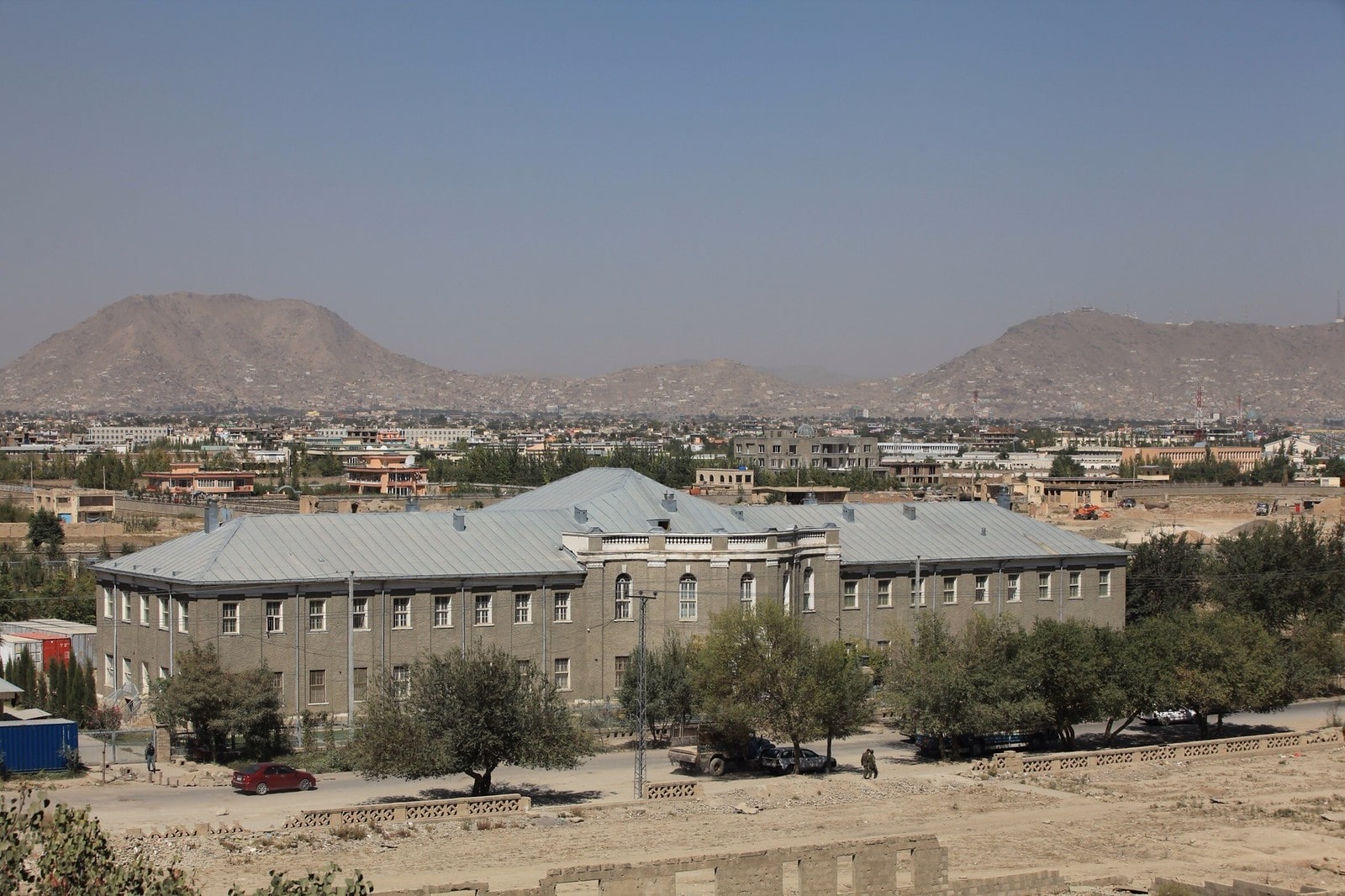
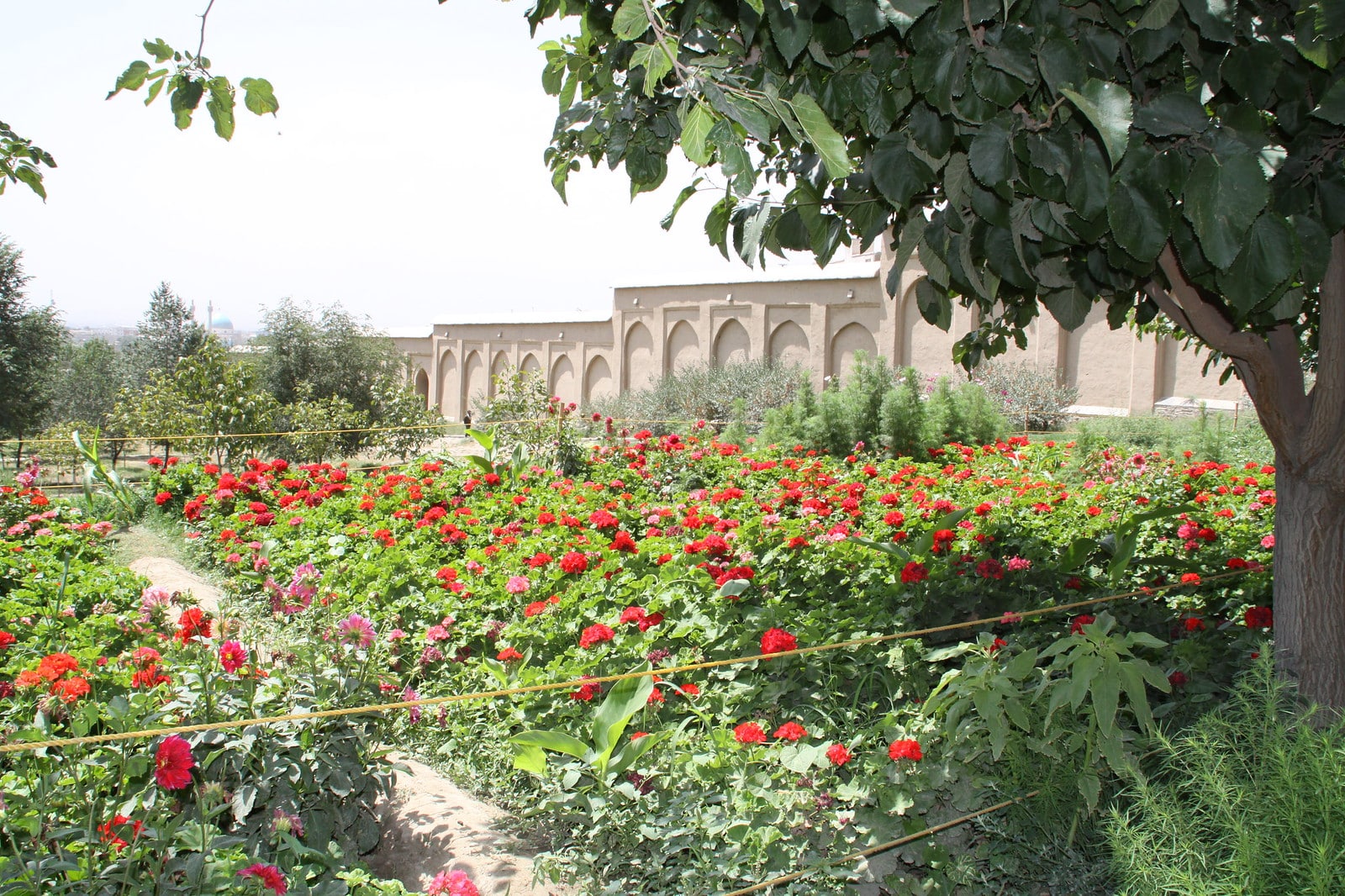
Babur Garden
The Garden of Babur is a historic park in Kabul, Afghanistan, and also has tomb of the first Mughal emperor Babur. It is thought to have been developed around 1528 AD, when Babur gave orders for the construction of an “avenue garden” in Kabul. The site continued to be of significance to Babur’s successors; Jahangir made a pilgrimage to the site in 1607 AD, and a marble screen was erected around his tomb in 1638.
During the Mughal Emperor Shah Jahan’s visit in 1638, a marble barrier was placed around Babur’s tomb, and a mosque was built on the terrace underneath.
7-day Itinerary in Afghanistan (with extension options)
Days 1 & 2 (with possible extension of 1 more day)
Kabul
Kabul is a historic city with a lot to offer. Kabul has the power to dazzle and perplex, from roaming through the bird market and the ancient city to finding quiet serenity in Babur’s Mughal Garden. We share with you some of our favorite spots to visit in Kabul in this itineray.
On your first day, you should visit Murad Khani – The historic city of Kabul has been partially rebuilt by Turquoise Mountain and could be visited if you have the proper contacts. Send them an email for further information, or turn up for a spontaneous tour. You can then visit the Shrine of Sakhi and the Gardens of Babur, which is a peaceful oasis in a tormented city. If you still have time on your first day (In Daylight), you can visit Bibi Mahro Hill, right behind Wazir Akbar Khan which overlooks the center of the city.
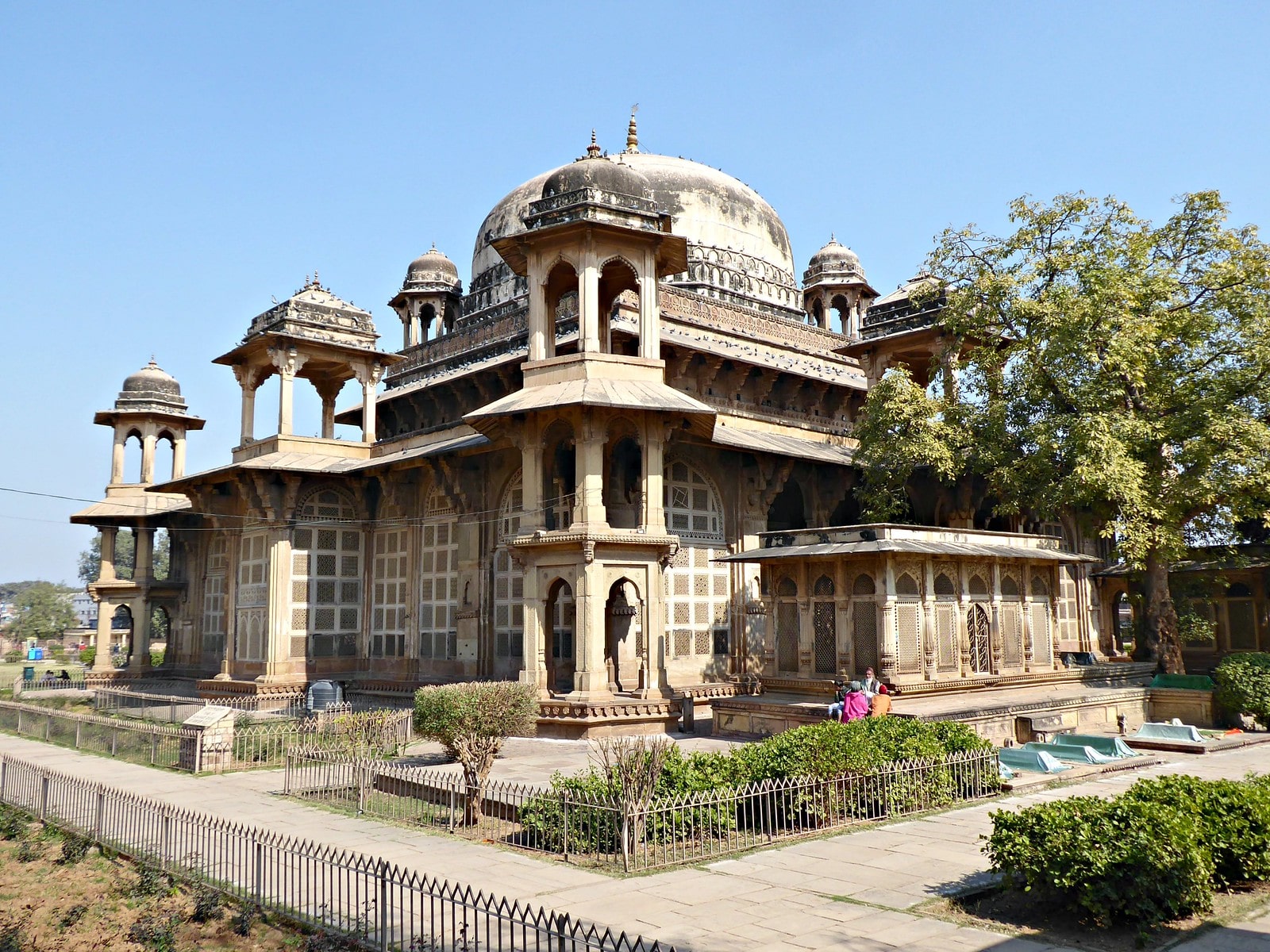

On your next day (day 2) visit Ka Feroshi bird market and the surrounding bazaar, then head to Kabul Museum followed by Omar Landmine Museum. When you are done, and if you have more time take a look at the view from the TV tower hill.
On your third day (if you chose to extend your stay, go to Chicken Street, old touristy souvenir shops from the good old Hippy Trail days. Afterwards, visit Shah-do-Shamshira Mosque. If you still have time, you may close your day by visiting one of Kabul’s fashionable cafés, where young urbanites interact and dream. The 14th, Slice Bakery, Afrah Cafe, Nosh Book Cafe, Kora, The Cupcake Cafe, and iCafe are among them. Google Maps can help you find these eateries.
On your fourth day in Kabul, you can take a day trip to Panjshir valley where nature meets destroyed tanks, and Massoud’s tomb lies in between.
On your fifth day, you can go on a day trip to two great places not too far from Kabul, Istalif a small town and Paghman a small valley just about an hour and two hour away distance.


In Kabul's Shahr-e Naw neighborhood, there are various budget and mid-range alternatives. This neighborhood is quite secure and is home to the well-known Chicken Street. During our expedition, we chose Serena Hotel.
- Budget: Salsal Guesthouse
- Mid-range: Omega Guest House
- High end: Serena Hotel
Kabul is undoubtedly the least secure city in Afghanistan. Though this was not always the case, Kabul has recently experienced frequent violence and a flurry of significant assaults, most notably the attack on the American University and the Taliban overtaking the capital recently.
Your main concern in Kabul is the high rate of abduction. Not necessarily by the Taliban, but by destitute individuals seeking ransom money. To be safe, don't tell anybody where you're staying, be cautious about who you trust, and avoid going out after dark.
Another danger is being caught in some crossfire, which is less common. Avoid the following to lessen your odds of the worse happening:
- Spending time near important government structures such as embassies and ministries
- Being stuck in traffic on major highways
- Crowds on the street, particularly when accompanied by a significant number of police officers
- Religious meetings, especially those held by minority like Shias
- You may want to join the Kabul Security Now Facebook page to get frequent updates on what's going on in Kabul (and to get a feel of how much truly goes on there).
Taking a taxi to Panjshir Valley: A cab to Panjshir Valley costs around $4 (3000 Afs) for a roundtrip to and from Panjshir Valley, but we've heard it can be done for less. The valley is around 100 kilometers away, and the trip takes about 2-3 hours, with checkpoint pauses along the way.
Bus to Mazar-i-Sharif: A bus from Mazar-i-Sharif to Kabul costs roughly $7 per passenger. Before purchasing a ticket, ask around to verify if the trip is safe, and depart early so the bus arrives before dark. If you choose this option, dress locally and keep a low profile. The fewer people who are aware that there is a foreigner on the bus, the better. We were advised in November 2018 that this road is generally secure at the time, but please go with caution.
Bus to Herat: We strongly advise against taking the bus to Herat. It travels across Taliban-controlled territory, and even Afghans prefer to fly. According to a Couchsurfing host, he knows Westerners who successfully completed the journey, but he feels they only did so because they could pass as Afghans. If you must travel the bus, keep your voice down.
Bus to Bamiyan: Because airplanes are still infrequent, you must go by bus to Bamiyan. Because the area between Kabul and Bamiyan is prone to violence, it's a good idea to check with locals before venturing there. If you want to ride the bus, ensure that the driver follows the Ghorband route, which is regarded safe. The route through Wardak is dangerous.
Flights to Mazar-i-Sharif, Herat, Kandahar, and Bamiyan: Ariana Afghan Airways has flights to the various locations you will be going to. Kam Air operates flights to Mazar-i-Sharif, Herat, Kandahar, and Bamiyan. It should be noted that not all destinations are published on the airline's websites. For domestic bookings, it is advisable to visit a ticket office. Depending on the location, one-way tickets range from $50 to $110. Flights to Bamiyan continue to be infrequent.


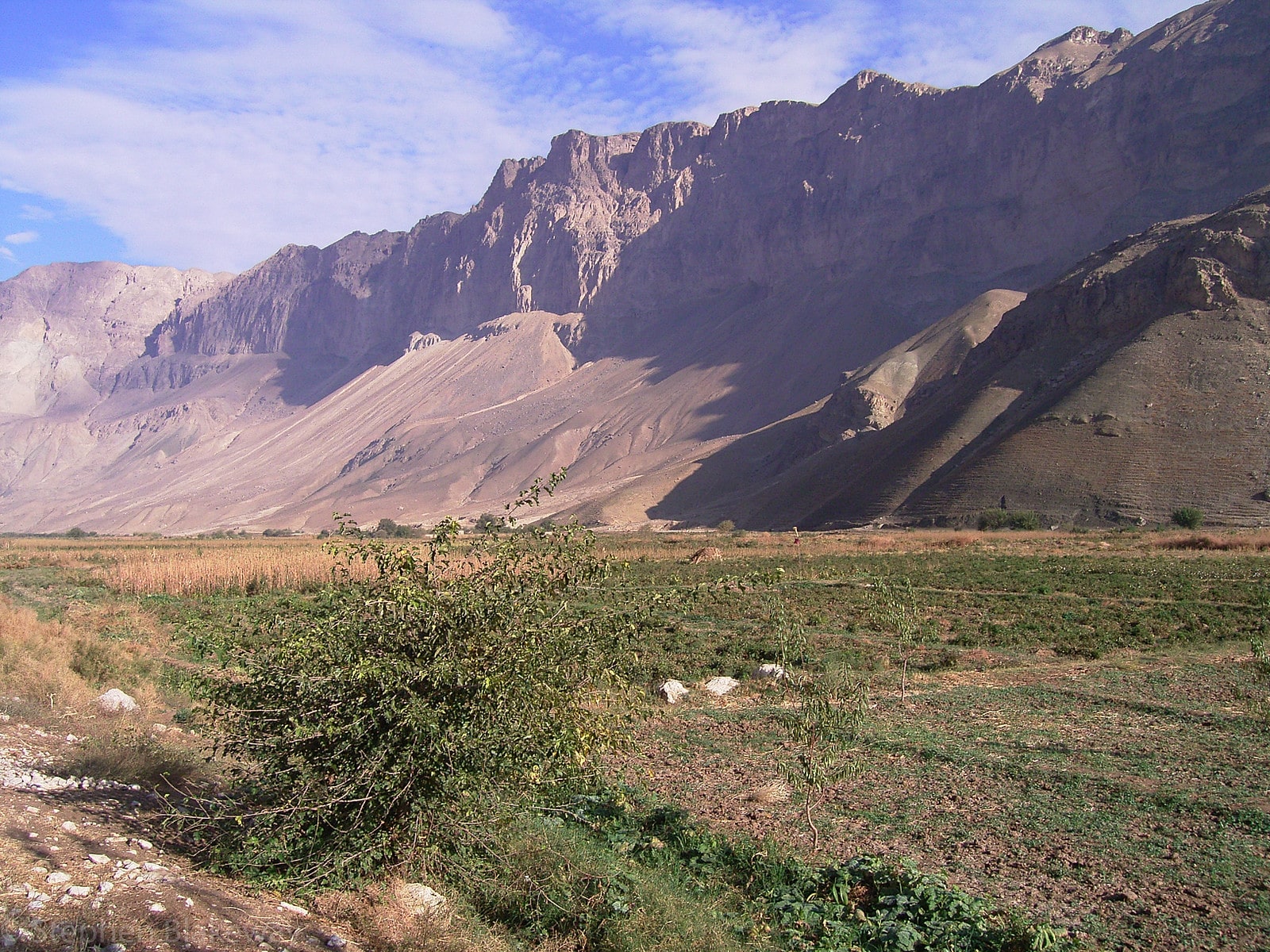
Days 3-5+ (Depending on whether you added the extra days in Kabul)
Fly to Mazar-i-Sharif
In one of Afghanistan’s most liberal cities, you’ll find many of individuals dressed in trendy, bright attire, and plenty of females wearing merely a headscarf rather than a burqa. Aside from the magnificent Shrine of Ali and the bazaars, there isn’t much to see in Mazar itself, but there are a handful of day excursions across Balkh province that are well worth your time.
The Blue Mosque, also known as the Shrine of Ali, is one of the highlights of any visit to Afghanistan. Aside from that, there are a number of day trips that can be taken from Mazar. Check out our photo essay on Mazar-i-Sharif for additional ideas.
- Hazrat Ali Shrine, also known as the Blue Mosque
- Old Balkh (day trip)
- Samangan (day trip)
- Bazaars surround the Mausoleum of Hazara leader Abdul Ali Mazari’s. Mazar-i-Sharif
The majority of lodging choices are concentrated around the bazaar and are within walking distance of the Ali Shrine. There are also a lot of affordable restaurants around. When we visited, we chose the Royal Oak Hotel.
Budget: Barg-e-Sabz Guesthouse
Mid-range: Barat Hotel
High end: Royal Oak Hotel (Renaissance Hotel)
Mazar-i-Sharif is the safest significant city in Afghanistan. Kidnapping is less of an issue here than it is elsewhere, and the Taliban does not operate frequently. Having said that, an attack on the German embassy in Mazar's center shown that even the "safest" areas in Afghanistan are dangerous.
Aside from the blasts, it's safe to stroll around until around 8 or 9 p.m., especially in the bazaar area where there are a lot of police, but try not to go too far from your guesthouse at night unless accompanied by a local
Cab to Old Balkh: A taxi to Old Balkh for a day tour around the attractions cost us $20. We stopped at maybe seven or eight different locations, and the guide didn't speak English (but was kind and patient despite the fact that we were stoned for half of it). We arranged for a cab with the assistance of the Barg-e-Sabz Guesthouse.
Bus to Kabul: A bus runs between Mazar-i-Sharif and Kabul for around 600 Afs each person. However, as of the time of writing, civilian traffic on this route had been halted owing to heightened Taliban activity in the region. Before purchasing a ticket, ask around to verify if the trip is safe, and depart early so the bus arrives before dark.
Flights to Herat or Kabul: Kam Air provides service to Herat and Kabul. You may save money on agency fees by going to their office on Martyr Masood Boulevard, which is located distant from Ali's mausoleum. The agency will be on your right after around 15 minutes of walking down the road. If that's too much trouble, there are lots of alternative air booking businesses along the road near the temple. All of the costs listed are one-way.
Ticket to Herat: 8,000 Afs ($120) - Mondays and Thursdays only.
Ticket to Kabul: 6,000 Afs ($90) per person – daily.
Cab to Hairatan (Uzbekistan border crossing): A taxi to the border costs $15, although it is possible to barter it down to $10. (780 Afs). More information may be found in our Uzbekistan – Afghanistan border crossing site.
Note: Prices may fluctuate based on the price of oil and the security situation in Afghanistan.
Days 6-7+
Herat
Strolling around Herat is nearly like walking throughout Iran… in one of Iran’s more conservative cities, that is. You’ll be hard pressed to locate a lady who isn’t dressed in a chador or burqa. Despite their gloomy clothing, the residents of Herat are among the nicest you’ll encounter, and the city is far from uninteresting. Herat is one of Afghanistan’s most beautiful cities, with colorful Persian mosques, historic buildings, and caravanserais encircling an epic, recently renovated fortress.
Herat is rich of historic structures and little streets to explore. We recommend spending at least two days exploring this city and its wonders.
- Jame Mosque (Friday Mosque)
- Herat Citadel
- Wander around the old city
- Mausoleum of Gowhar Shad – Ask to be let inside!
- Shrine of Gazar Gah
- Musalla Complex and minarets – the grounds were closed when we visited in 2018 so ask around for a caretaker
- Pul-e-Malan arched bridge
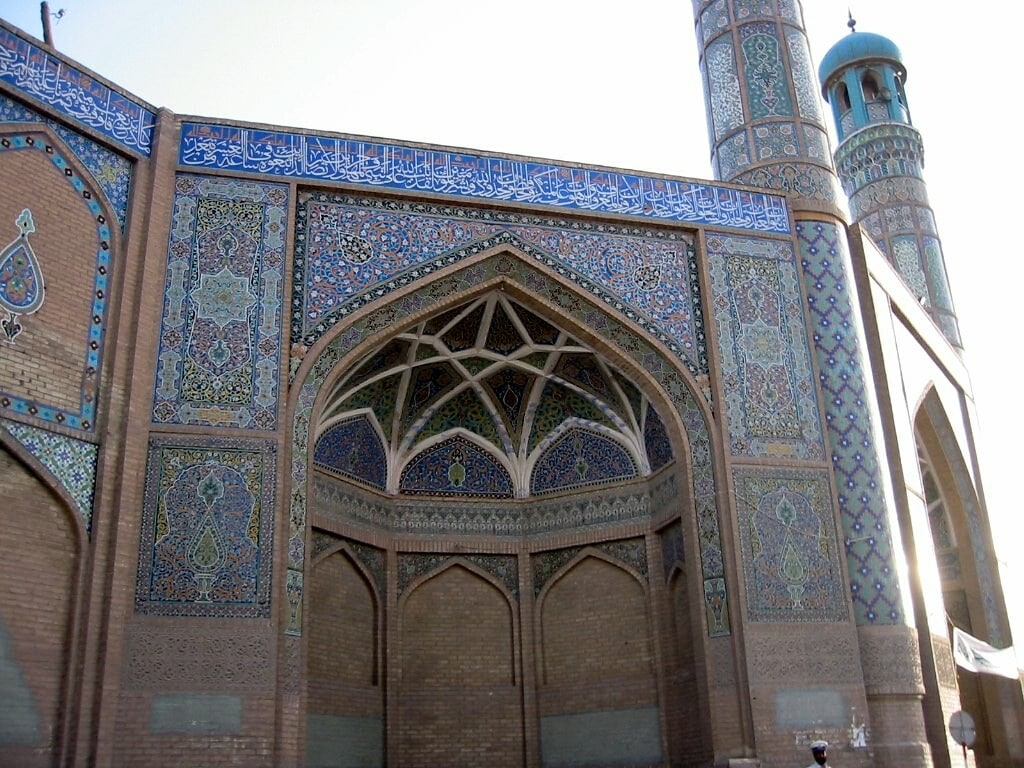

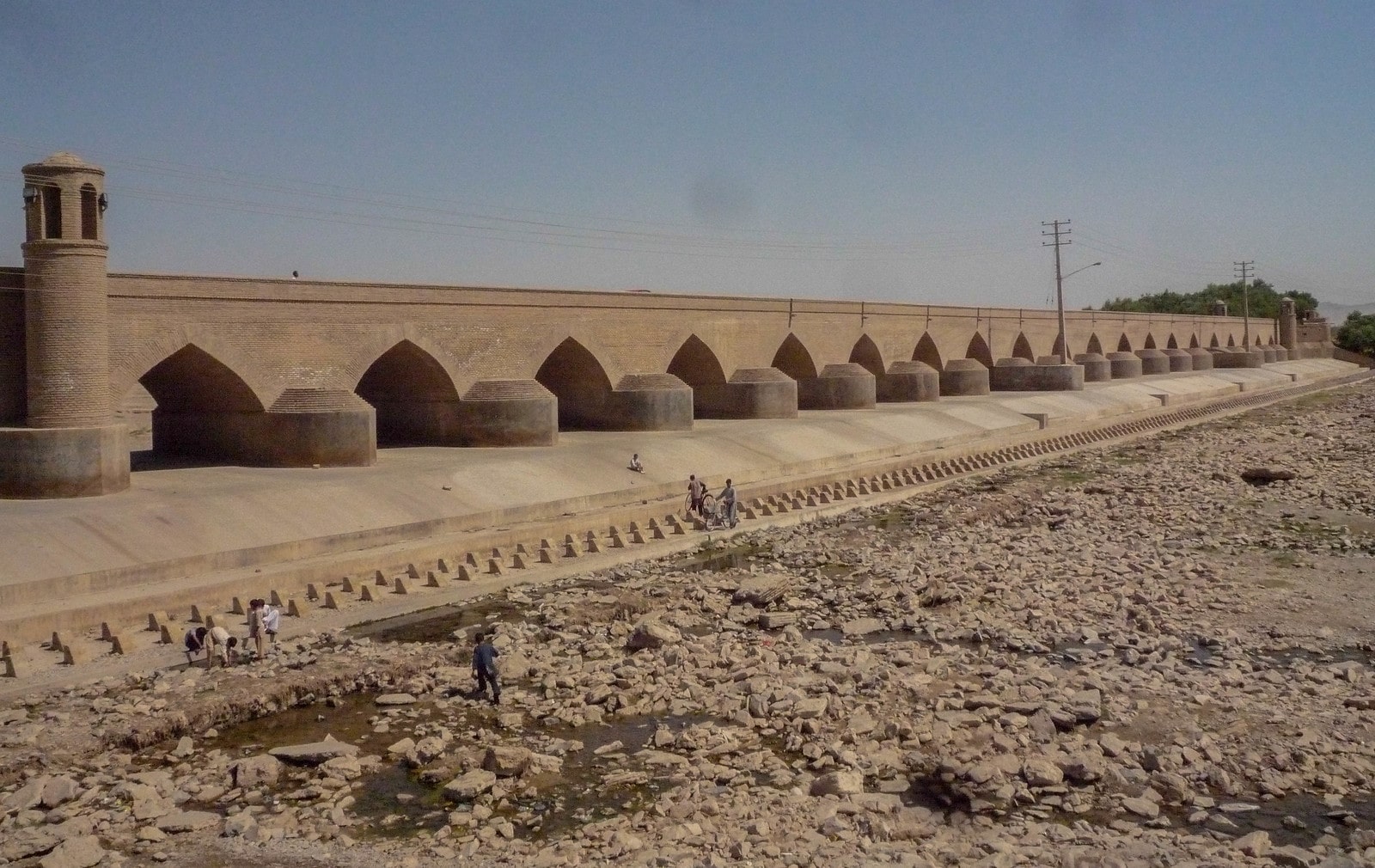
Besides the guesthouses we mention below, Herat has a decent CouchSurfing scene for Afghan standards. There are several trusted hosts in Herat, so check it out if you’re so inclined.
Budget: Mowafaq Guest House – $20 for a double with shared bathroom or single with private bathroom Northeast corner of Chawk-e-Golha, next to the Bank Milli. It’s famous, taxi drivers will know it.
Mid-range: Marco Polo Hotel – $40 – 50 a night for single with bathroom - Badmurghan street, +93 (40) 221 946 or (40) 221 947, mobile +93 (0) 799 206 192 or +93 0700 436 622, [email protected]
High end: Nazary 4 Star Hotel – Rooms for less than $150 a night, Herat’s most luxurious hotel
There is a lot of poverty in Herat, and drug use runs rampant. Herat is growing increasingly dangerous due to poverty, to the point that the police felt the need to let us know that we were not safe and needed to leave certain areas.
Kidnapping is your biggest concern here, so be cautious: don’t wander too late at night, try not to walk the same route every day, and don’t tell people where you’re staying unless you trust them. Try to blend in by wearing a local dress, though female travelers will inevitably get stares if they aren’t in chador or burqa.
If you need help with anything in Herat, the men working in the offices of the citadel are extremely friendly and have a good command of English. Meeting them on one of your first days in Herat can be very helpful. There are also several reputable Couchsurfers in Herat.
- Bus to Kabul: There is a bus to Kabul from Herat, but we highly recommend you do not take this route. It passes through regions controlled by the Taliban, and even Afghans prefer to fly over these regions. A Couchsurfing host said he does know foreigners that have successfully made the trip, but he suspects they only made it because they could pass as Afghans. If you do take the bus, stay silent so no one knows you’re foreign!
- Flights to Mazar-i-Sharif or Kabul: Kam Air offers flights to Mazar-i-Sharif and Kabul. All prices mentioned are one-way.
- Ticket to Mazar-i-Sharif: 8,000 Afs/person ($120), Mondays and Thursdays
- Ticket to Kabul: 7,000 Afs/person with Kam Air ($91), 6,000 Afs/person with Ariana Afghan Airlines ($80), daily
- Prices may vary depending on the oil price and the safety situation in Afghanistan
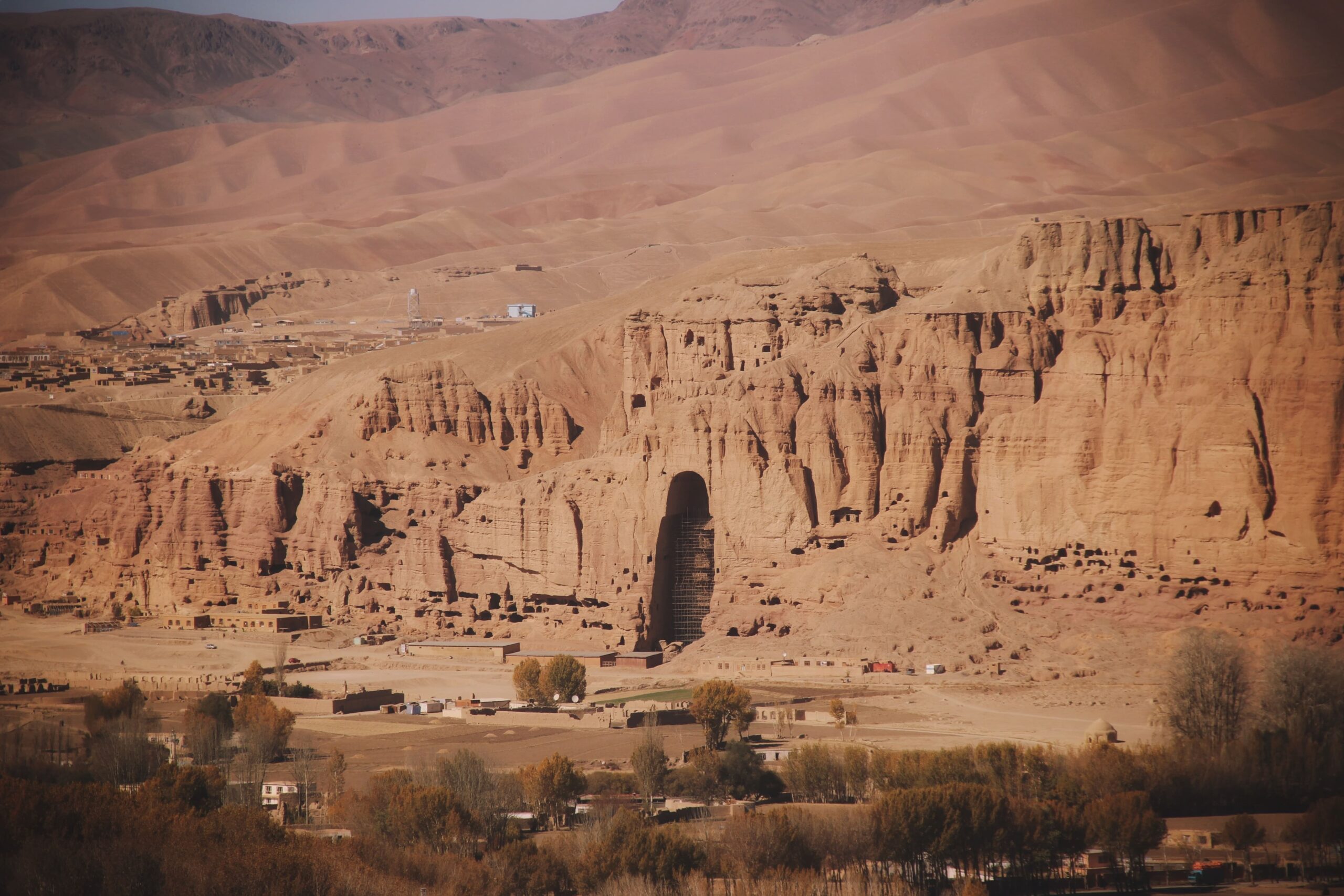
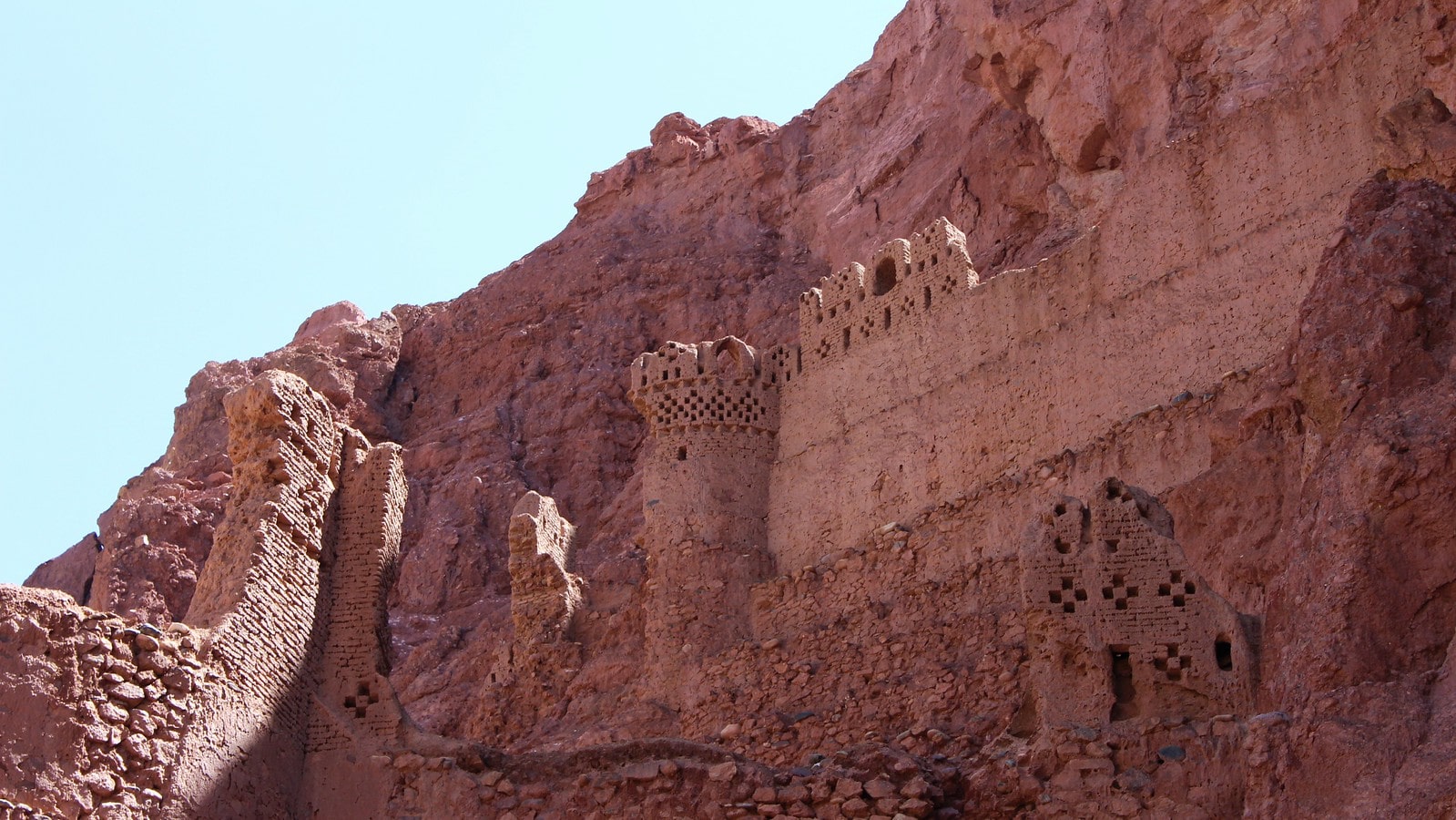

Days 8-9+
Bamiyan
Bamiyan is both physically and metaphorically a breath of fresh air after the stressful, concrete jungle of Kabul. Bamiyan, a vibrantly colored village in the highlands near Kabul, was once home to hundreds of Buddhist monks and a vital stop along many Silk Road trade routes. It’s now a refuge for history fans and hikers, and you can even ski or snowboard in the winter!
It is possible to spend several days visiting all of Bamiyan’s caves, fortifications, and natural landscapes. You may do so with ease since Bamiyan is the safest region for foreigners to visit in “mainland” Afghanistan, and its Hazara community is among the friendliest in the country. There are a good number of persons who can speak English as a result of their rising tourist activities.
Note that a ticket is required to visit certain sights in Bamiyan, which we have marked with an asterisk (*) below. A ticket is 300 Afs and is only valid for one day. The first 3 on the list can be seen in one day. If you ask, the ticketing office has a very informative pamphlet on Bamiyan and its sights.
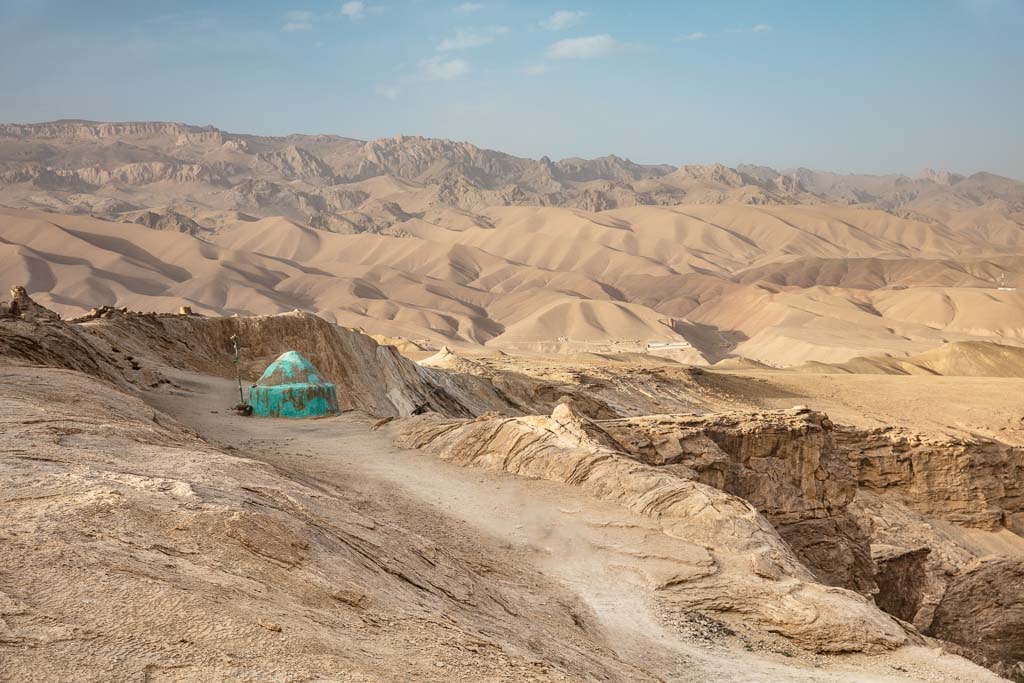
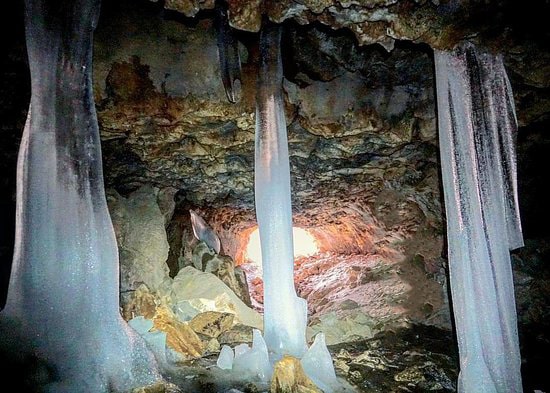
It is important to note that certain attractions in Bamiyan require a ticket, which we have noted with an asterisk (*) below. A ticket costs 300 Afs and is good for one day only. The first three items on the list may be viewed in a single day. If you inquire, the ticketing office offers a highly comprehensive leaflet on Bamiyan and its attractions.
- Buddha enclaves*
- Shahr-e-Zohak fortress*
- Shahr-e-Gholghola fortress*
- Chehel Situn caves*
- Dara-e-Azhdahar (Dragon Valley)
- Watch the sunset from over the big Buddha or Shahr-e-Gholghola
- Go skiing or boarding (winter)
- Visit Band-e-Amir (see below)
- Foladi ice caves
- Budget: Along the main bazaar street, there are various "hostels." This entails sleeping on the floor in a room with... whomever else happens to turn up! If you're a couple, you'll most likely be sharing a room with large Afghan families. A place in a room costs between 400 and 500 Afs per person.
- Mid-range: Caravanserai Hotel - $30 per night for a double room with a private bathroom (down from $60 per night). Across the street from the huge Buddha's base. For $10 per day/2 people, they'll presume you want breakfast and supper here as well. Make it clear that you do not want this.
- High end: Highland Hotel – $70 – 90 for a typical room
You can walk around in the evenings, stroll to nearby villages, and generally relax. Just be cautious when walking around in nature—the areas around Bamiyan were once heavily mined. Though most mines have since been removed, those that value their legs and/or lives would do good to stick to beaten paths.
- Flights to Kabul: Flying from Kabul is the safest way to get to Bamiyan. Plane tickets are a set 7,500 Afs/person ($110) one-way, regardless of when you buy them. Be sure to buy them a few days in advance, as there’s only one flight each day on a 30-passenger plane.
- Flight days: Wednesday, Thursday, Saturday, Sunday
- Kabul – Bamiyan: 7 AM, arrives 7:30
- Bamiyan – Kabul: 8 AM, arrives 8:30
- Taxi to Shahr-e-Zohak: The fortress is about 18 kilometers from Bamiyan. A taxi there and back should be around 400 – 500 Afs. Official taxis can be found on the main bazaar street. Shared taxis are 150 Afs one way.
- Taxi to Dara-e-Azdahar: About 7 kilometers away from Bamiyan, you can either walk (2-3 hours) or take a taxi. If you’re willing to walk a bit out of Bamiyan, you’ll eventually encounter unofficial shuttle/shared taxis driving up and down the road between Bamiyan and the village in Dara-e-Azdahar. We were picked up by one on our way back, and the several kilometer ride was only 20 Afs/person.
- Taxi to Band-e-Amir: The lakes are about an hour’s drive away. We paid 1,500 Afs for a taxi for the day, and he took us to 3 of the 6 lakes (the third required a bit of persuasion). A shared taxi to Band-e-Amir is 250 Afs one way.
Days 10-11+
Band-e-mir
The 6 lakes of Band-e-Amir are extraordinarily gorgeous and a highlight of vacationing in Afghanistan, with probably the bluest waters in the world. They’re a popular summertime destination for Afghan visitors because they’re home to Afghanistan’s first—and only—National Park.
From March until mid-November, services are provided around the lakes. If you go outside of the summer, pack some additional layers—it gets cold, especially at night! When we arrived in October, there was ice on the ground.
The sights are free, however upon reaching the town, you must pay a 200 Afs park entry charge. Walk around the lakes, of course.
In Band-e-Haibat, take a ride on the tacky swan paddle boats.
Bathe in the purportedly curative waters; ladies can bathe in the little hut near the Band-e-Haibat waterfall.
Visit the shrine to Hazrat Ali


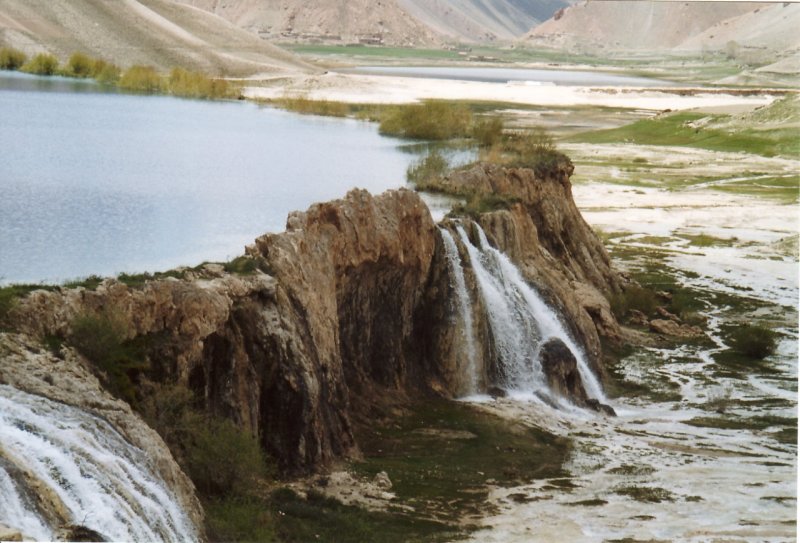
- Camping: There is free public camping space accessible, as well as public facilities located around the hamlet. However, locals warn against camping here because a few individuals were abducted here some years ago.
- Budget: The Dir Hotel/chaikhana near Band-e-Haibat, which is the most popular lake, charge 100 Afs for a mat on the floor.
- Mid-range: National Park Guest House - The property is marked with a sign on the left side of the main road through the Band-e-mir hamlet.
Band-e-Amir, like Bamiyan, is not under danger. The mining concern, though, remains—stick to routes and marked areas.
- Bus to Bamiyan: In the high season, a minibus goes from Bamiyan to Band-e-Amir on Thursday afternoons and Friday mornings. Request confirmation from a local (and let us know if you locate it!).
- Taxi to Bamiyan: It's recommended to book a cab from Bamiyan to Band-e-Amir and return. Ours was 1,500 Afs for a day excursion (arranged by the kind owner of Caravanserai), but the price might range between 2,000 and 3,000 Afs. If you're lucky, you might be able to get a shared cab for 250 Afs one way.
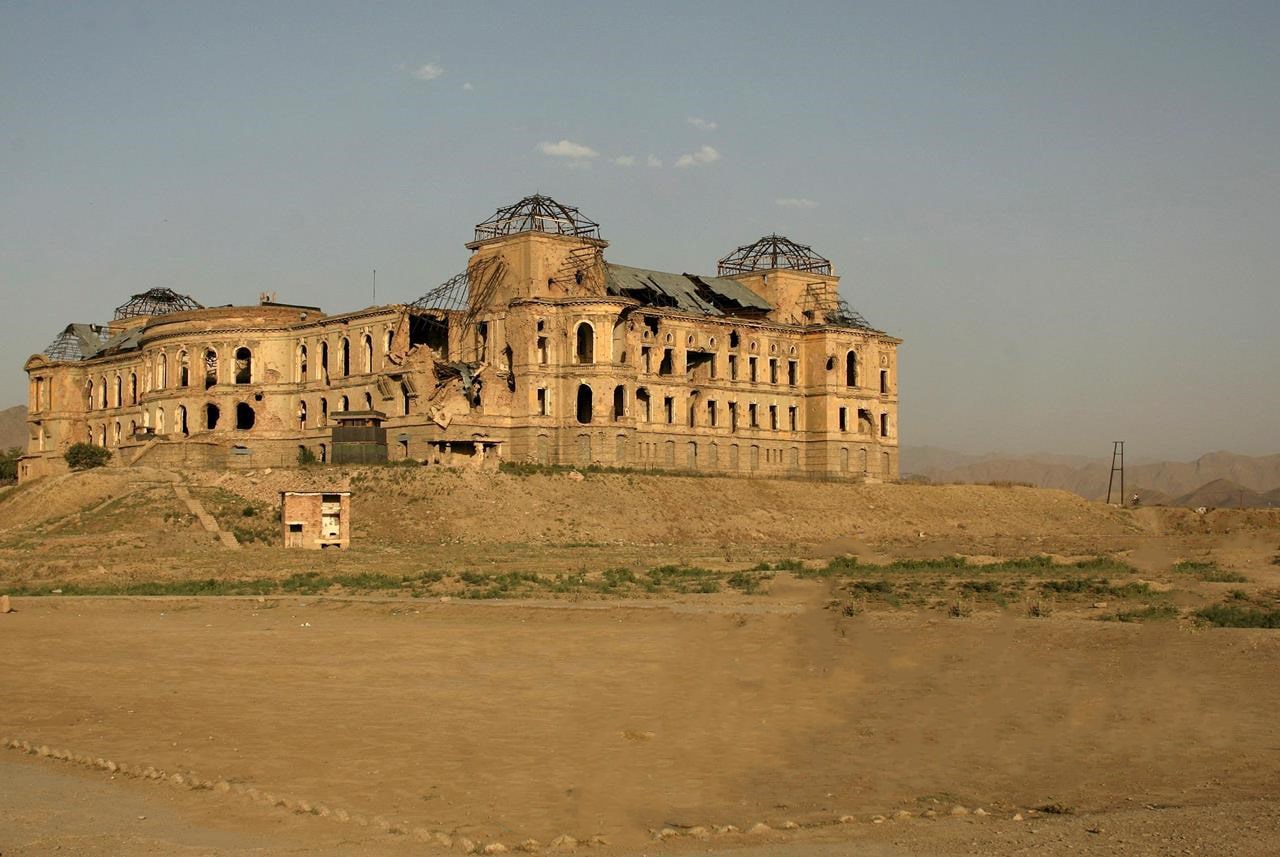


Days 12-13+
Kandahar
The historic capital of the Durrani Empire is rich in history and home to some of Afghanistan’s most important religious monuments. The city, founded by Alexander the Great, is significant in Afghan history and served as the first capital of the Afghan Empire under Ahmad Shah Durrani.
Until recently, the city was deemed too dangerous for travel, but it is now considered quite safe. However, we strongly advise you to build local relationships before you attend, as showing up alone is not advisable. Kandahar is not a location you should try to traverse on your own, because to Taliban activities in the outlying areas and an almost excessive security presence in the city. Couchsurfing is your ally.
Things to do in Kandahar
Kandahar has a lot of history to cover, so there’s a lot to see. Some of these locations are located a little outside of the city, thus it is advised that you visit them with a local contact.
- Mosque of the Hair of the Prophet
- Mosque of the Cloak of the Prophet
- Tomb of Ahmad Shah Durrani
- The 40 Steps (Chilzinia) — while we were there, a security checkpoint was erected near the entrance, and our host claimed they would not let us in.
- Mausoleum of Mirwas Khan Nika
- Orange Palace and Old Kandahar
- Shrine of Baba Wali Kandhari
- Sarphosa Bazar
As previously said, you should have a local contact in Kandahar with whom you may stay or who can organise sleeping arrangements for you. Kandahar is not used to international tourists, and most hotels and guest homes will not let you stay.
However, if you are unable to locate a host, there are two possibilities for staying in Kandahar.
- Budget: Armani Hotel – Charges $22 for a double. consider emailing them for more info.
- Mid-range: Continental Guest House – Costs $55 for a double with a lovely courtyard.
The recently assassinated Kandahar police commander, also known as the torturer in chief, had done a lot to clean up the city, although by terrible means, as his moniker indicates. As a result, the city is quite safe, and there may be a bigger police presence than even in Kabul. However, the surrounding areas are still teeming with Taliban and drug producers, so keep a low profile and dress appropriately.
The only practical option for getting to Kandahar is to fly. The road linking other major towns passes through Taliban-controlled territory, while the road between Kabul and Kandahar passes through places where violence has increased.
Flights to Kabul are available on a daily basis with Kam Air (6,400 Afs/$85) and Ariana Airlines (5,400 Afs/$70).


Days 14-15+
Wakhan Corridor
The breathtaking Wakhan corridor is Afghanistan’s sole certified safe zone, as well as the country’s most frequented by foreign tourists. Far from the rest of the nation, the small panhandle is populated by Kyrgyz and Wakhi people who are distinct from Afghans from the “mainland.”
It’s such an isolated place that some residents are unaware of the Taliban’s existence. If hiking and camping are your passions, the Wakhan is the place to be. It should be noted that it can only be reached by crossing from Tajikistan, unless you want to go through Taliban-controlled territory. (Quick Tip: don’t do that.)
This section will be added shortly.
This section will be added shortly.
This section will be added shortly.
The Most Popular Food in Afghanistan
Afghanistan was a land of great warriors who ruled over the country. It is located in Central Asia. While these tales faded with time, they left behind their culture. The magnificent food of these warriors is still a part of the country and is well-known across the world.
People from all nations and cultures go to Afghanistan’s capital, Kabul, to sample the most delectable and difficult-to-resist Afghan delicacies. Afghan cuisine is heavily influenced by Persia (Iran), India, and Mongolian food. Chilies, saffron, garam masala (cardamom, cinnamon, cloves, cumin, nutmeg), and pepper were all imported from India.
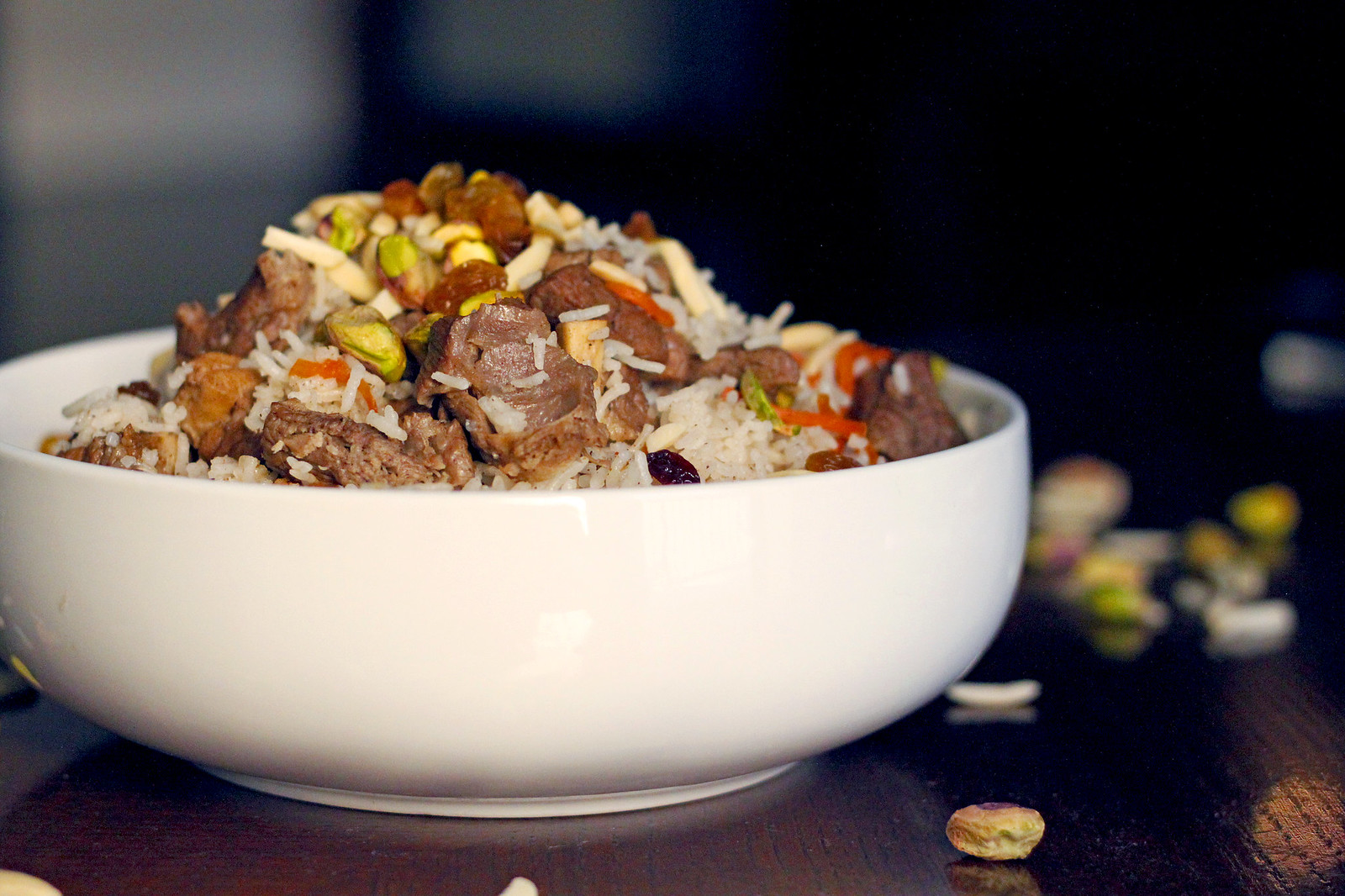
Kabuli Pulao
Kabuli pulao is a simple dish to prepare since it only requires a few ingredients. Because of its popularity, it is recognized as Afghanistan’s national dish. It’s a slow-cooked pulao using lamb and mutton, as well as a meat stock called yakhni. This rice dish uses few seasonings and is flavored with lamb grease. For a touch of sweetness, it is afterwards topped with raisins and shredded carrots.

Aushak
Aushak is a traditional Afghani dish that is typically consumed during the month of Ramadan or other Islamic celebrations. Pasta dumplings are packed with chives, tomato purée, kofta pashaan (minced beef sauce), and dried mint leaves before being topped with an unique yogurt sauce.
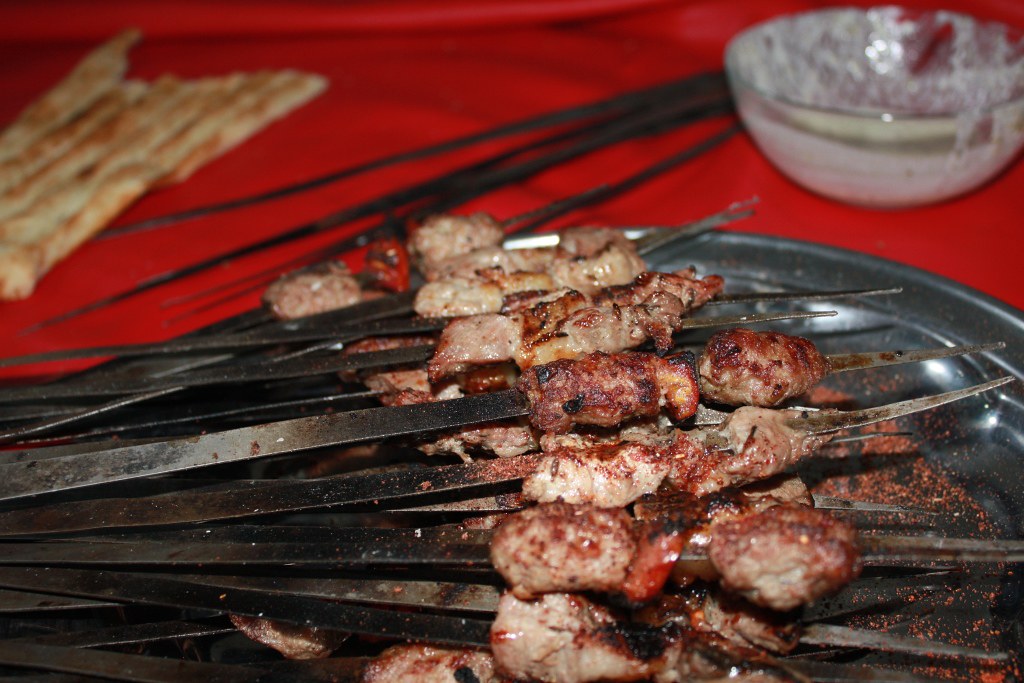
Afghan Kabab
Afghan Kebab is widely regarded as one of the greatest foods you will ever encounter. It’s not only simple to make, but it also tastes fantastic. Kebabs are produced in many ways across the world, but Afghani kebabs are among the best. Mutton is a key component, and the red chili powder adds a spicy kick that keeps customers coming back for more. Afghan kebabs can be served alongside other main courses.

Qormah
Qormah may not be the most popular food, but it is a hearty and welcome dish that is frequently offered at family gatherings. It’s cooked using mutton, so it’s both traditional and tasty. It is also well-known for having a high nutritional value. It is one of the greatest meals in Afghanistan

Mantu
Mantu is a popular dish in Afghanistan. It is popular for its dumpling-like look and delectable taste. Mantus are pastry wrappers filled with seasoned lamb. They can be prepared in two ways: boiled or steamed. To improve the appearance, they are frequently topped with yoghurt and garlic.
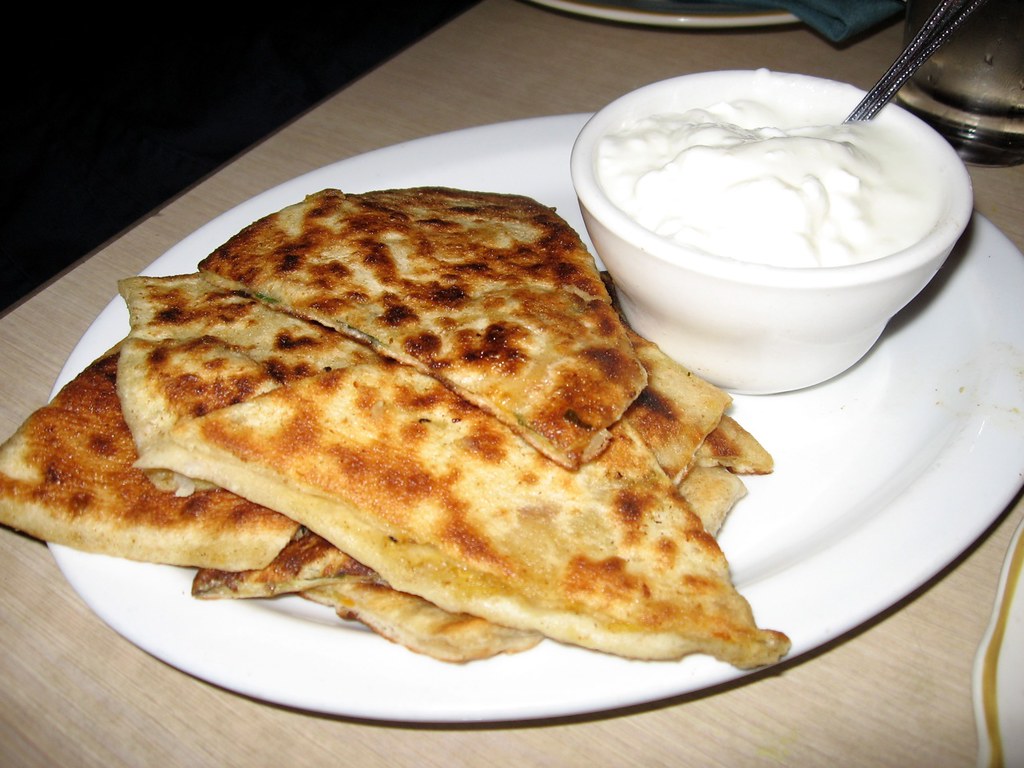
Bolani
Bolani is a sort of flatbread that is often baked or fried. It can be stuffed with a variety of ingredients, such as a combination of vegetables and meat, or it can be eaten simply with yoghurt. It is commonly served as a side dish or as an appetizer at birthdays, engagement parties, and holidays. It can be served with yoghurt or mint yoghurt, but the most popular side with bolani is doogh, an unique drink.

Afghan Karahi
One look at Afghani karahi will have your mouth watering. Its excellent look and delightful aroma will undoubtedly entice you. Cooking it is a lengthy procedure that involves meat (of any variety) as the major protein, as well as a variety of fragrant spices and vegetables. It’s finished with freshly chopped coriander leaves. Afghani karahi is a modern and widely consumed meal. It’s usually served it with naan or roti to round up the meal!

Borani banjan
Borani banjan is a dish of eggplant served with yoghurt and garlic. You will instantly fall in love with it the first time you taste it. Cayenne pepper can be put on top as a garnish as well as to improve the taste. The dish’s fresh and spicy aroma is what makes it one of Afghans’ favorite cuisines.

Mastawa
Mastawa is a delicious rice dish commonly made in the winter. It generally contains small grains of rice along with sun-dried mutton. Bitter orange peel and spices are added when serving to make the dish more fragrant and spicy. Mastawa can also be cooked with other dried meats such as the Afghan ghost-e-qaqh, while a final touch of quroot, a type of Afghani cheese made from strained, salted, and dried yoghurt, is also added.

Osh Pyozee
Osh pyozee is an Afghani dish that consists of stuffed onions with meat. The onions are cooked first to soften them before being filled with a pork mixture. They may also include feta prepared from goat’s milk, which has a strong, creamy flavor. It is a popular traditional meal that is only prepared on rare occasions owing to the time and effort required.
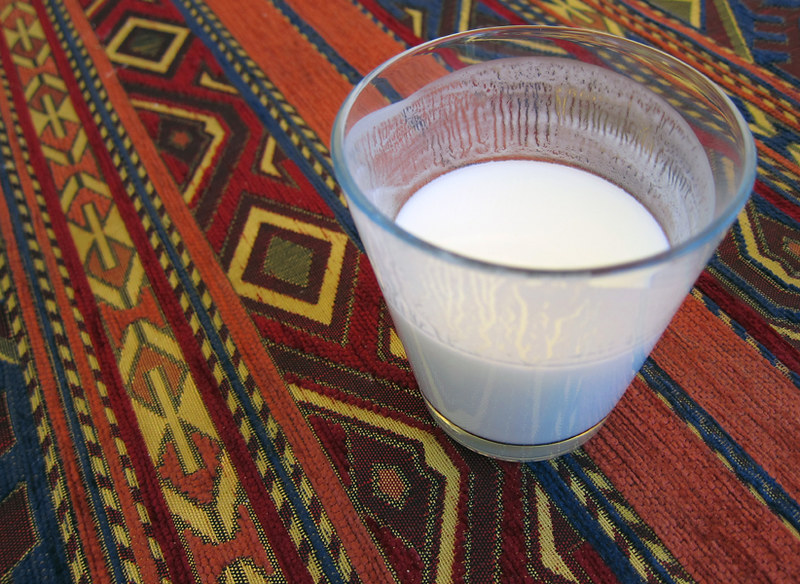
Shomleh
Shomleh is a refreshing summer drink composed with water, yoghurt, and fresh or dried mint. To make it even more refreshing, many people add shredded cucumber. It is the second most popular beverage in Afghanistan (the first being tea). Shomleh was consumed around noon during the summer since it is refreshing in hot weather. It is frequently cooked from scratch, although it is also widely available in supermarkets and restaurants. In Afghanistan, shomleh is also known as doogh.

Bamiyah
Bamiyah is a tasty traditional meal prepared with okra, onions, and garlic. It is a vegan cuisine that is loaded with nutrients. It is often served as a major course at lunch or supper. It’s delicious whether served with pita bread or plain white rice. Adding pomegranate molasses to the meal before serving improves the flavor and appearance.

Sheer khurma
Sheer khurma is the most popular Afghani sweet dessert. Muslims typically cook it for special events or holidays such as Eid-ul-Fitr and Eid al-Azha. Depending on the location, the meal comprises of vermicelli, milk, and other dried fruits.
Sheer khurma is often prepared for breakfast following Eid prayers on the first day of Eid al-Adha and is provided to visitors throughout the day. The rich flavor of pure khurma elevates these joyous events.
What's the Travel Budget in Afghanistan?
Flights
-
Flights start at roughly $550 from nearby countries. Tickets however on average cost around $800 and can cost more depending on which class and from which country you depart from.
Accommodation
-
Nomad Backpacking style travelers can expect to spend around $120 for a week
-
Budget travelers can expect to spend around $250 for a week
-
Mid-range travelers can expect to spend around $480 for a week
-
Luxury travelers can expect to spend around $1350 for a week
Food Budget (Three meals and drinks)
-
Nomad Backpacking style travelers can expect to spend around $15 per person per day
-
Budget travelers can expect to pay around $30 per person per day
-
Mid-range travelers on average would cost them $38 to $45 per person per day
-
Luxury travelers can expect to pay around $70 to $110 per person per day
Overall Budget Styles (Not including flights)
-
Nomad Backpacking style travelers can expect to spend around $250 for a week
-
Budget travelers can expect to spend around $460 for one person for a week
-
Mid-range travelers can expect to spend around $800 for one person for a week
-
Luxury travelers can expect to spend around $2130 for one person for a week
Flights
-
Flights start at roughly $550 from nearby countries. Tickets however on average cost around $800 and can cost more depending on which class and from which country you depart from.
Accommodation
-
Nomad Backpacking style travelers can expect to spend around $120 for a week
-
Budget travelers can expect to spend around $250 for a week
-
Mid-range travelers can expect to spend around $480 for a week
-
Luxury travelers can expect to spend around $1350 for a week
Food Budget (Three meals and drinks)
-
Nomad Backpacking style travelers can expect to spend around $15 per person per day
-
Budget travelers can expect to pay around $30 per person per day
-
Mid-range travelers on average would cost them $38 to $45 per person per day
-
Luxury travelers can expect to pay around $70 to $110 per person per day
Overall Budget Styles (Not including flights)
-
Nomad Backpacking style travelers can expect to spend around $250 for a week
-
Budget travelers can expect to spend around $460 for one person for a week
-
Mid-range travelers can expect to spend around $800 for one person for a week
-
Luxury travelers can expect to spend around $2130 for one person for a week
Flights
-
Flights start at roughly $550 from nearby countries. Tickets however on average cost around $800 and can cost more depending on which class and from which country you depart from.
Accommodation
-
Nomad Backpacking style travelers can expect to spend around $120 for a week
-
Budget travelers can expect to spend around $250 for a week
-
Mid-range travelers can expect to spend around $480 for a week
-
Luxury travelers can expect to spend around $1350 for a week
Food Budget (Three meals and drinks)
-
Nomad Backpacking style travelers can expect to spend around $15 per person per day
-
Budget travelers can expect to pay around $30 per person per day
-
Mid-range travelers on average would cost them $38 to $45 per person per day
-
Luxury travelers can expect to pay around $70 to $110 per person per day
Overall Budget Styles (Not including flights)
-
Nomad Backpacking style travelers can expect to spend around $250 for a week
-
Budget travelers can expect to spend around $460 for one person for a week
-
Mid-range travelers can expect to spend around $800 for one person for a week
-
Luxury travelers can expect to spend around $2130 for one person for a week
Flights
-
Flights start at roughly $550 from nearby countries. Tickets however on average cost around $800 and can cost more depending on which class and from which country you depart from.
Accommodation
-
Nomad Backpacking style travelers can expect to spend around $120 for a week
-
Budget travelers can expect to spend around $250 for a week
-
Mid-range travelers can expect to spend around $480 for a week
-
Luxury travelers can expect to spend around $1350 for a week
Food Budget (Three meals and drinks)
-
Nomad Backpacking style travelers can expect to spend around $15 per person per day
-
Budget travelers can expect to pay around $30 per person per day
-
Mid-range travelers on average would cost them $38 to $45 per person per day
-
Luxury travelers can expect to pay around $70 to $110 per person per day
Overall Budget Styles (Not including flights)
-
Nomad Backpacking style travelers can expect to spend around $250 for a week
-
Budget travelers can expect to spend around $460 for one person for a week
-
Mid-range travelers can expect to spend around $800 for one person for a week
-
Luxury travelers can expect to spend around $2130 for one person for a week
If you want to know what to pack, read this list below:
- This is an extremely conservative country that can get incredibly hot, dress accordingly
- Raincoat or Light Waterproof Jacket
- Hiking Boots or Sturdy Sneakers (Shoes You Don’t Mind Getting Wet)
- Sunscreen
- Insect Protection – Repellent and Clothing
- Sunglasses and Sun Hat
- Water Shoes
- Beach Towels/Sarong
- Dry Bag
- Money Belt or Cross Bag
- Portable Medical Kit
- Flashlight or Headlamp
- Copies of your passport.
- Get all the needed vaccinations before traveling
- A power bank is a must in any travel.
- Always have some cash with you just in case there are no ATMs and if you are dealing with a business that solely accepts cash
- Get yourself an adapter for your gadgets
- 1 toothbrush
- 1 tube of toothpaste
- 1 razor
- 1 package of dental floss
- 1 small bottle of shampoo
- 1 small bottle of shower gel
- 1 towel
- Deodorant
- Band-Aids
- Hydrocortisone cream
- Antibacterial cream
- Earplugs
- Tylenol
- Hand sanitizer (germs = sick = bad holiday)
- A key or combination lock
- Zip-lock bags
- Plastic bags (great for laundry)
- Universal charger/adaptor
- LifeStraw (A water bottle with a purifier)
- 1 dry shampoo spray & talc powder
- 1 hairbrush
- Makeup you use
- Hairbands & hair clips
- Feminine hygiene products
Clothing For Boys
- 1 pair of jeans or khaki pants
- 1 pair of shorts
- 1 bathing suit
- 5 T-shirts
- 1 long-sleeved T-shirt
- 1 pair of flip-flops
- 1 pair of sneakers
- 6 pairs of socks
- 5 pairs of boxer shorts
Clothing For Girls
- 1 swimsuit
- 1 sarong
- 1 pair of stretchy jeans
- 1 pair of leggings
- 2-3 long-sleeve tops
- 2-3 T-shirts
- 3-4 spaghetti tops
- 1 light cardigan
Want to plan your own trip, here are some of the best resources that can help you
- Skyscanner – They search small websites and budget airlines that larger search sites tend to miss. They are hands down the number one place to start.
- Momondo – This is another favorite flight search engine because they search such a wide variety of sites and airlines. Always check here too.
- Booking.com – The best all-around booking site that constantly provides the most affordable and lowest rates. They have the widest selection of budget accommodation.
- Couchsurfing – This website allows you to stay on people’s couches or spare rooms for free. It’s a great way to save money while meeting locals who can tell you the ins and outs of their city. The site also lists events you can attend to meet people (even if you’re not staying with someone).
- Intrepid Travel – If you want to do group tours, go with Intrepid. They offer good small group tours that use local operators and leave a small environmental footprint.
- Grassroots Volunteering – For volunteering, Grassroots Volunteering compiles a list of good local volunteer organizations that keep the money within the community.
- Get Your Guide – Get Your Guide is a huge online marketplace for tours and excursions. They have tons of tour options available in cities all around the world, including everything from cooking classes, walking tours, street art lessons, and more! It has the world’s largest collection of things to do with more than 30,000 activities in 7500 destinations.
- SafetyWing – Safety Wing offers convenient and affordable plans tailored to digital nomads and long-term travelers. They have cheap monthly plans, great customer service, and an easy-to-use claims process that makes it perfect for those on the road.
- Trip Advisor: Check the reviews and then book your accommodation. TripAdvisor is where you go when you want to compare prices with multiple accommodation providers.
- VRBO: is the main search engine to use when you are looking for a home or apartment rental. It can sometimes be cheaper than hotels and it is the best way to stay in areas that offer a more local feel.
- Hostelworld: With one of the largest databases of hostels in the world, Hostelworld is the go-to site when you are looking for budget accommodation.
- Rome 2 Rio: If you want to see how to get somewhere by plane, train, bus, ferry, or car Rome2Rio lays it all out for you as well as related costs.
- World Nomads Insurance: When traveling you should always have travel insurance. We have found the best bang for your buck is by far World Nomads.
Final thoughts
Given how chaotic things can be, you may still be able to have a unique experience in Afghanistan. Although we strongly discourage the normal traveler to embark on such a trip, some may find such challenge an interesting thing.
Would you visit Afghanistan? Have you ever been?
Let us know in the comments below.
1 Comment
When someone writes an post he/she keeps
the plan of a user in his/her mind that how a user can know it.
So that’s why this post is perfect. Thanks!